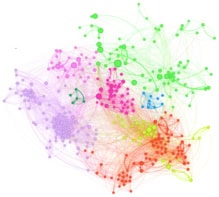
A vast upgrade to the XENON dark-matter experiment at the Gran Sasso National Laboratory in Italy is set to provide a significant increase in sensitivity by being able to better spot cosmic rays masquerading as dark-matter particles. Costing $11m and expected to start taking data in 2015, XENON1T will contain one tonne of xenon to hunt for weakly interacting massive particles (WIMPs) – a leading dark-matter contender.
The XENON detector contains 100 kg of xenon and has provided the world’s best limits on the collisional cross-sections between WIMPs and xenon atoms within the detector. But despite the laboratory being situated deep underground to block out most other particles, stray neutrons produced by the decay of cosmic-ray muons can still enter the detector and produce “false positives”. Because the signal from the WIMPs, if they exist, will be weak, these false positives could obscure the real signal.
In a conceptual design report published earlier this year, the XENON team has laid out the design of its new Cerenkov detector, half of which will be funded by the US. To eliminate unwanted neutrons and improve sensitivity, XENON1T will be housed in a 10.5 m-high cylindrical water tank, the construction of which has now been completed. Whenever a relativistic neutron passes though, it will produce Cerenkov radiation that will be detected by photomultipliers.
Should a signal be recorded at the same time as one from a neutron, it will be a false positive that can be ignored, because WIMPs do not interact with the electromagnetic force and so cannot produce light of their own. XENON1T could be followed by an even bigger detector in around 2021, dubbed XENONnT, which will have more than seven tonnes of xenon. This would increase the opportunities for scattering events resulting in a stronger WIMP signal, possibly to the point where firm conclusions about the nature of dark matter can be made.



